Key takeaways
- Activist teacher resources foster critical thinking and engagement with social issues, transforming education into a personal and motivating experience for students.
- Effective community service preparation involves practical tools like checklists and communication strategies, which enhance organization and team spirit.
- Student ownership in project planning leads to increased enthusiasm and commitment, making projects more meaningful and effective.
- Reflection on project outcomes is essential for personal growth and helps students learn from setbacks, fostering a continuous learning cycle in activism.

Understanding Activist Teacher Resources
Activist teacher resources are more than just lesson plans or handouts—they’re tools that empower both educators and students to engage deeply with social issues. When I first started using these resources, I realized they sparked curiosity and critical thinking in my classroom like nothing else had. Have you ever noticed how a carefully chosen article or video can change the entire atmosphere of a lesson?
These resources often highlight real-world problems and invite students to explore their roles in creating change. I remember a project where my students connected local environmental concerns with global movements, which made the learning experience intensely personal and motivating. It’s those moments when education moves beyond textbooks that true activism begins.
Understanding activist teacher resources also means recognizing the emotional journey they prompt. There’s vulnerability in confronting injustice, both for students and teachers, and these materials can guide us through those feelings. How can we support our students to transform empathy into action? That question always keeps me searching for resources that balance emotional awareness with practical steps.
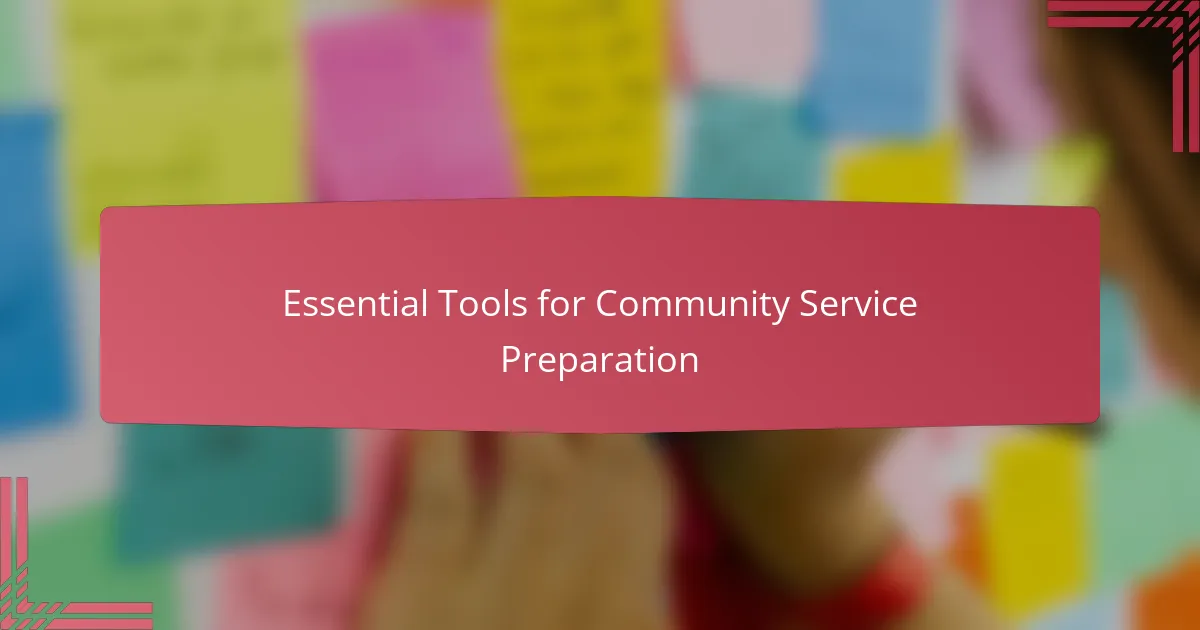
Essential Tools for Community Service Preparation
When preparing students for community service projects, I found that having the right tools makes all the difference. Simple items like checklists, calendars, and reflection journals kept everyone organized and focused. I remember one project where a detailed timeline helped my students stay on track, turning what could have been chaos into smooth, purposeful action.
Another essential tool is reliable communication. Establishing clear channels—whether through messaging apps or face-to-face meetings—created a sense of accountability and connection. I often asked myself, how can I foster a team spirit when students are scattered across different neighborhoods? Setting up regular check-ins became the answer, and I witnessed their confidence grow as they shared updates and challenges.
Finally, I learned that equipping students with knowledge is as vital as physical tools. Providing background information, community contacts, and safety guidelines eased anxiety and empowered them to engage meaningfully. Watching their initial hesitation transform into enthusiasm reminded me why thoughtful preparation can turn a simple service project into a memorable journey of growth.
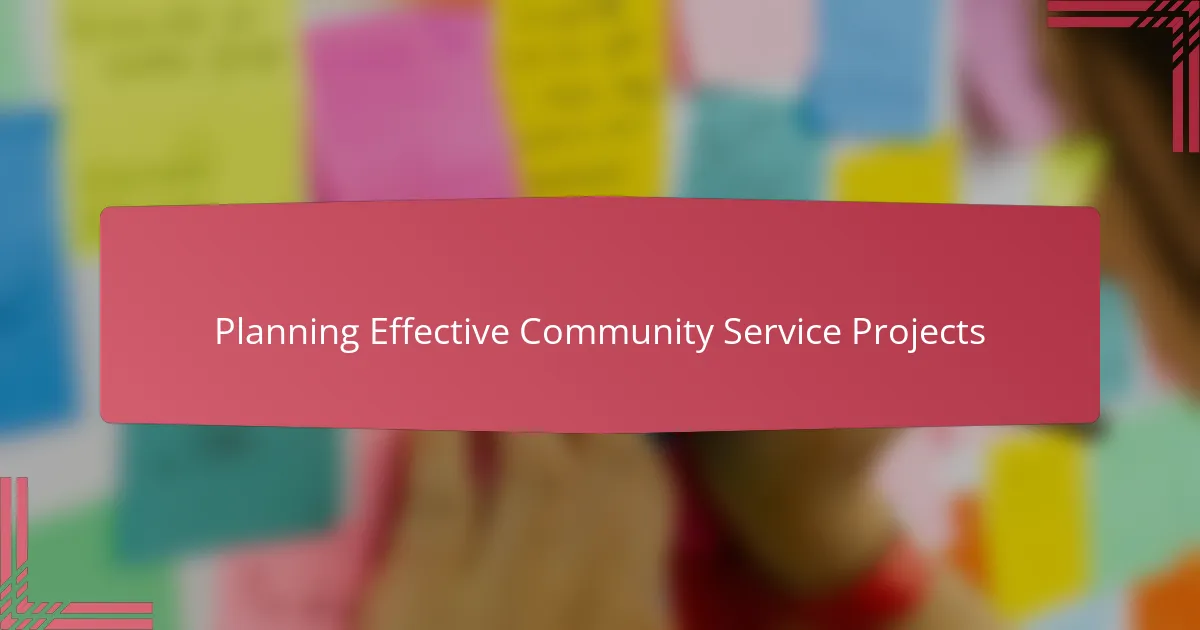
Planning Effective Community Service Projects
Planning effective community service projects starts with listening closely to the community’s needs. I’ve noticed that projects thrive when students feel their work truly matters, not just ticking a box. How often do we pause to ask the people we want to help what they really need? Taking this step reshaped my approach and deepened my students’ commitment.
I also learned that setting clear, achievable goals creates a roadmap everyone can follow. In one of my earlier projects, vague objectives led to confusion, but once we broke tasks into small, concrete steps, the momentum built naturally. That feeling of crossing off each milestone brought a satisfying sense of progress and purpose for the students.
Lastly, planning means anticipating challenges before they arise. I’ve found that discussing potential obstacles openly with students empowers them to problem-solve creatively. It’s amazing how preparing for bumps in the road can transform uncertainty into confidence. Have you ever seen a group rally together because they knew they were ready for anything?
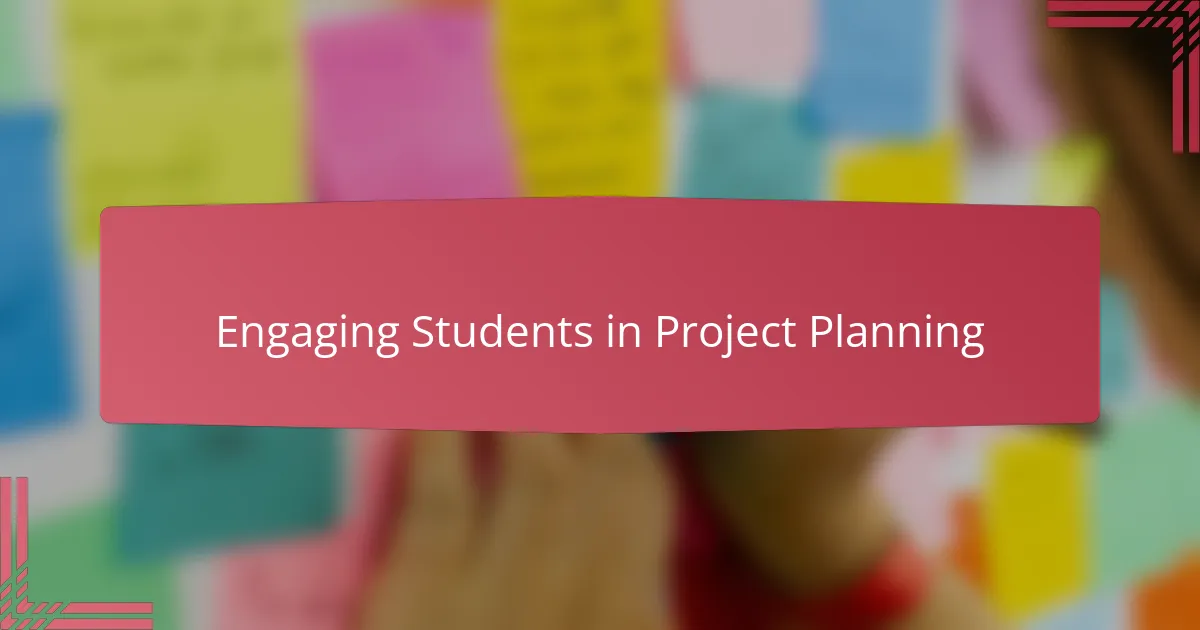
Engaging Students in Project Planning
Getting students actively involved in the planning process truly shifts the dynamic. I remember one project when I handed over the initial brainstorming entirely to my students—they lit up with ideas I hadn’t considered, and suddenly, the project felt like it belonged to them. Doesn’t ownership spark a deeper commitment?
Sometimes, engaging students means guiding them to ask the right questions. I encouraged my class to explore who would benefit most from their efforts and what resources they’d need. When they started thinking about logistics and impact on their own, I noticed their enthusiasm grew beyond just completing a task.
It’s equally important to keep the planning sessions interactive and flexible. I’ve witnessed how allowing space for discussion and even debate helped students refine their ideas into a clearer, more effective plan. Have you found that when students co-create, the project not only becomes more meaningful but also more doable?

Teaching Practical Skills for Service
When teaching practical skills for service, I focus first on the “how-to” aspects that students often overlook—like effective communication and time management. I’ve seen firsthand how a quick workshop on respectful listening or clear task division can turn a group hesitant about volunteering into a confident, cooperative team. Have you ever noticed how mastering a simple skill boosts not just ability but also motivation?
Hands-on practice is another crucial step. I’ll often run mini role-plays or simulations, letting students experience scenarios they might face during their projects. One time, this approach helped a shy student find her voice when interacting with community members, which was a breakthrough moment for both of us. Isn’t it amazing how practical exercises build readiness in a way that theory alone can’t?
Finally, I make sure to embed reflection into skill-building, encouraging students to consider what worked and what they’d improve next time. This not only sharpens their abilities but also deepens their understanding of service as a process, not just a one-time event. How often do we remind students that learning is ongoing—even in activism? That mindset change transforms their engagement profoundly.
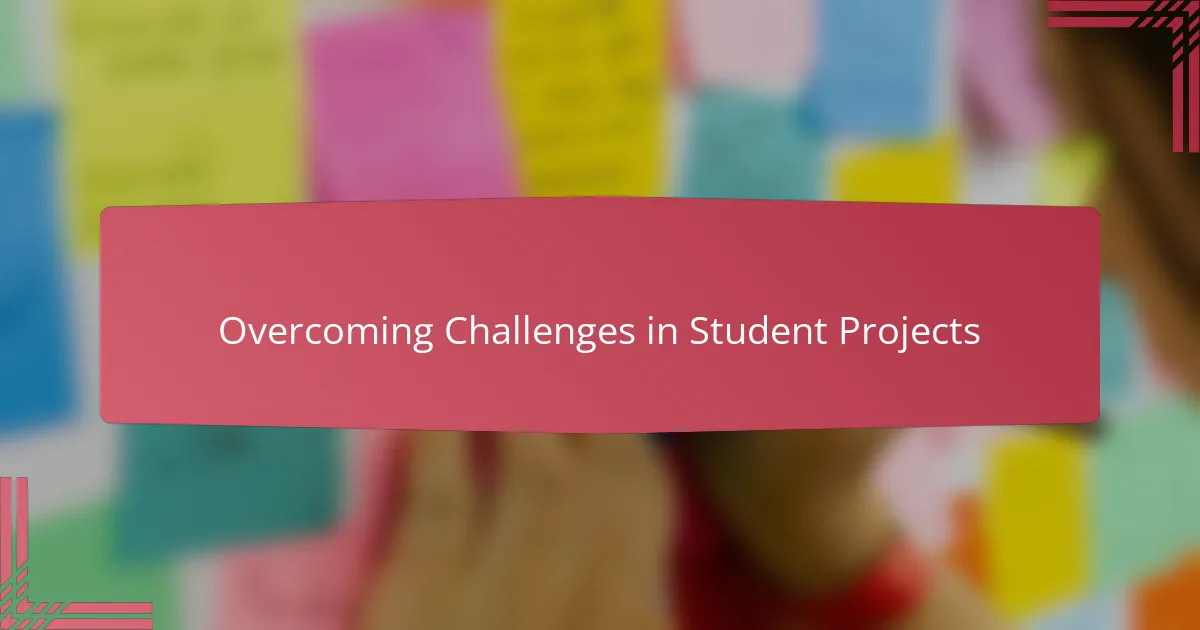
Overcoming Challenges in Student Projects
Challenges inevitably arise during student community service projects, and I’ve learned that facing them head-on makes all the difference. I remember a time when a sudden change in community needs threw my students off balance—initial frustration quickly turned into creative problem-solving once we regrouped and adjusted our plan together. Isn’t it remarkable how resilience grows when challenges become learning opportunities?
Communication breakdowns can easily derail progress, so I made it a point to keep dialogue open and supportive throughout. When one group struggled with conflicting schedules, creating a shared calendar and regular check-ins turned tension into teamwork. Have you ever noticed how just feeling heard can boost a group’s motivation and commitment?
Another hurdle is managing students’ doubts and fears, especially when projects touch sensitive social issues. I encourage honest conversations about those feelings, which helps students process emotions and stay focused on their goals. It’s in those moments of vulnerability that I see their confidence blossom—proof that overcoming internal obstacles is just as important as external ones.
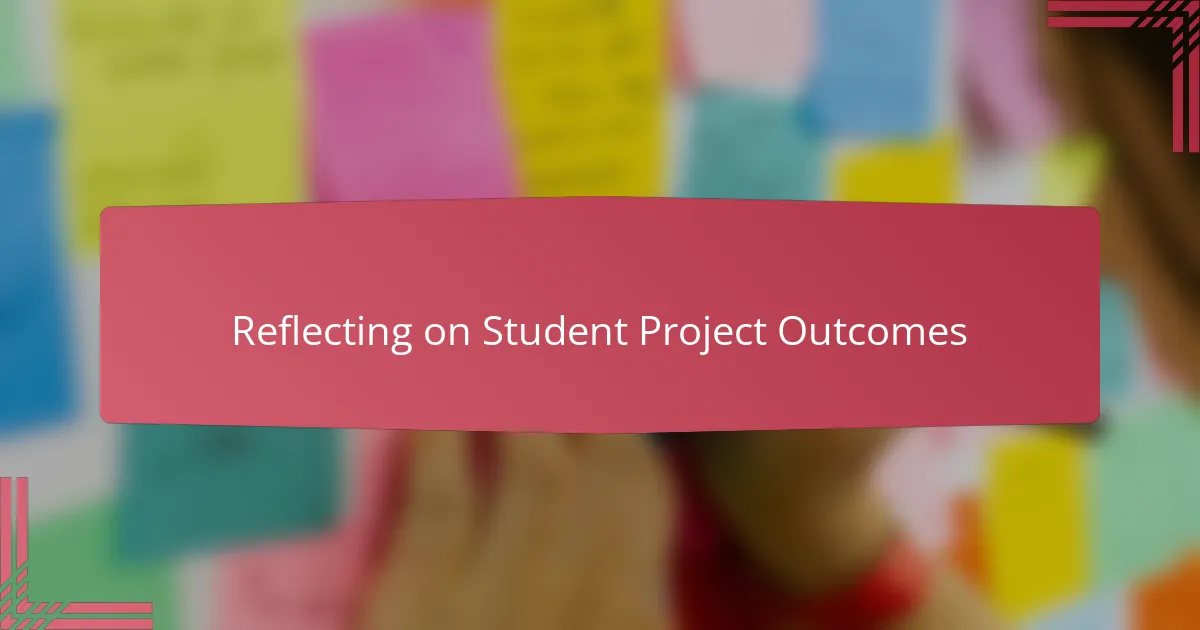
Reflecting on Student Project Outcomes
Reflecting on student project outcomes often reveals lessons that no textbook can teach. I recall a project where, despite careful planning, some goals weren’t fully met—but in those moments, students discovered unexpected strengths and new perspectives. Have you ever noticed how setbacks sometimes open doors to deeper growth?
It’s important to create space for honest reflection, where students can share both successes and frustrations without judgment. When my class gathered to discuss their experiences, their insights became invaluable not just for evaluating impact but also for shaping future projects. That kind of openness strengthens their sense of agency.
Ultimately, reflecting turns service into a cycle of continuous learning. I’ve seen how guiding students to connect outcomes with their personal growth fuels motivation for ongoing activism. When they ask themselves, “What did I learn, and what comes next?” that’s when the real transformation begins.